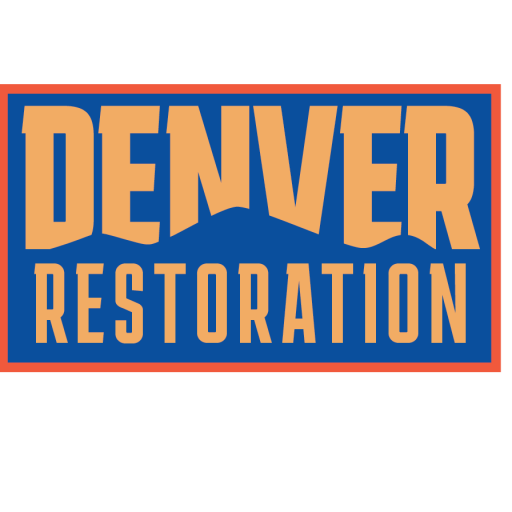Decoding Lead Abatement: A Comprehensive Guide
The anxiety of dealing with lead in your property can be overwhelming. From concerns about health risks to uncertainties about the process, the issue of lead abatement can be a challenging one. The solution lies in understanding the lead removal process and discovering how certified professionals can assist in creating a safe environment for you and everyone else. This post sheds light on the crucial aspects of lead abatement and guides you on the path to a safer, lead-free property.
Recognizing the Risks
Lead exposure can have serious health implications, especially for children. It can impact both physical and mental health and even lead to developmental delays in severe cases. This is why addressing lead-based paint hazards is not only a property issue but a health and safety matter too.
For more details on the health implications of lead exposure, visit the Maryland Department of Environment Lead Poisoning Prevention Program.
Identifying the Presence of Lead
Before jumping into the abatement process, it’s essential to establish whether your property indeed has a lead issue. Certain signs can indicate the presence of lead, such as peeling or damaged paint, especially in homes or buildings built before 1978.
Should you suspect lead in your property, it’s advised to conduct a lead inspection or risk assessment. These evaluations will reveal the presence of lead and the risks it poses. It’s always better to take action before it becomes a larger problem.
The Process of Lead Abatement
Lead abatement involves thorough procedures to remove, encapsulate or enclose lead-based paint. Here’s a general overview of what the lead abatement process entails:
* Planning and Preparation: This phase involves evaluating the property, identifying lead-based paint hazards and preparing the property for lead abatement.
* Abatement: This step involves the actual removal or sealing of the lead-based paint or materials. This should be handled by licensed and experienced professionals to prevent unwanted exposure.
* Cleanup: Post-abatement, the property is meticulously cleaned to ensure any residual lead dust or debris is appropriately disposed of.
* Clearance: Once the cleanup is done, a lead clearance examination is conducted to ensure lead hazards have been properly addressed and the property is safe.
For insights into how these steps are handled professionally, you may want to check out this link.
Steps Toward a Safe Environment
Dealing with lead abatement can be daunting, but it’s a critical step in ensuring a safe environment for all. Armed with the right information and assistance from certified professionals, you can navigate the process with assurance. In the end, lead abatement is more than just a procedure; it’s a step towards a healthier, safer space for you and those you care about.
For more support and guidance on lead abatement, visit the Maine Department of Environmental Protection Lead Program. And remember, you don’t have to face this alone. Professional support and solutions are just a call away.
Finally, don’t forget that there are other environmental concerns that might need immediate attention in your home or office, such as asbestos and black mold. You can learn more about handling these situations at Understanding Your Fears: Personalized Support for Asbestos Removal and Free Yourself from Mold Concerns with Professional Black Mold Solutions.
Lead Abatement: Your Key to a Healthier Future
Don’t let the presence of lead overshadow your peace of mind. Understanding lead abatement and how to effectively manage it is crucial to your journey towards a healthier, safer living or working environment. With the right information and expert assistance, you can rest assured that you are taking the necessary steps towards a lead-free future.
Managing Exposure: Post-Abatement Precautions
Regardless of the extent of abatement, it’s necessary to remain vigilant and monitor your environment for any potential lead exposure. Typically, after the lead abatement process, it is essential to maintain your property in good condition to prevent any lead dust from stirring up. Ensure that repainting is done regularly, particularly in areas with lead-based paint.
Moreover, maintain cleanliness around your property by regularly wiping down surfaces and washing hands and toys that children frequently handle to limit contact with potential lead dust.
For useful tips and guidelines on post-abatement precautions, visit the Illinois Department of Public Health’s Lead Abatement and Mitigation Department.
Ensuring Compliance: Legal Aspects of Lead Abatement
Lead abatement is not just about safety; it’s also about legal compliance. Depending on where you live, there may be various regulations and legal requirements regarding lead-based paint in residences and commercial buildings.
Non-compliance can result in hefty fines, legal action, and could even affect the sale of your property. Therefore, it’s vital to understand the laws in your area and ensure your property complies with them.
Choosing Professional Help: The Value of Expertise
While the internet may offer a plethora of DIY methods for dealing with lead-based paint, it is strongly advised to enlist the help of professionals for lead abatement. Lead removal requires specific skills, tools, and safety measures to ensure effective resolution without triggering further exposure.
Professionals are trained to safely handle lead materials, use appropriate safety gear, and thoroughly clean the area after the job. Moreover, they are familiar with state and local regulations, ensuring that the abatement process is compliant with all legal requirements.
To get the best advice and assistance in dealing with lead abatement in your property, connect with a certified professional at Lead Abatement Professionals: Commitment to Safety and Satisfaction.
Understanding Lead Certifications: Trusting Expertise
When it comes to handling lead, not all professionals are created equal. Only those with specific certifications and training are qualified to handle lead abatement. These certifications ensure that the professional has the necessary knowledge, skills, and competence to properly and safely deal with lead-based paint.
If you’re looking to connect with certified professionals, make sure to check their credentials and certifications. View the Wisconsin Department of Health Services Lead-Safe Wisconsin Information to learn more about lead certifications and what they mean.
Making a Difference: Your Role in Lead Abatement
Remember, you are the main player in ensuring a lead-safe future for your home or workspace. By seeking out information, recognizing the signs of lead exposure, and taking the necessary action, you can make a significant difference. Lead abatement is a team effort that requires the cooperation of both professionals and property owners.
Equipped with knowledge from sources like this blog and armed with the support of certified professionals, you can confidently handle any lead-related issue that comes your way. It’s about safeguarding the health of those who matter most to you.
A Lead-Free Future: It’s Within Your Reach
Lead abatement may seem like a massive task, but with the right knowledge and professional assistance, it is entirely manageable. Lead doesn’t have to jeopardize your peace of mind or the health of those around you. By understanding the process and taking the appropriate steps, you can work towards a lead-free future confidently.
So, don’t dread lead. Understand it. Combat it. Overcome it. A lead-free future is not just an aspiration; it’s a reality you can create.

